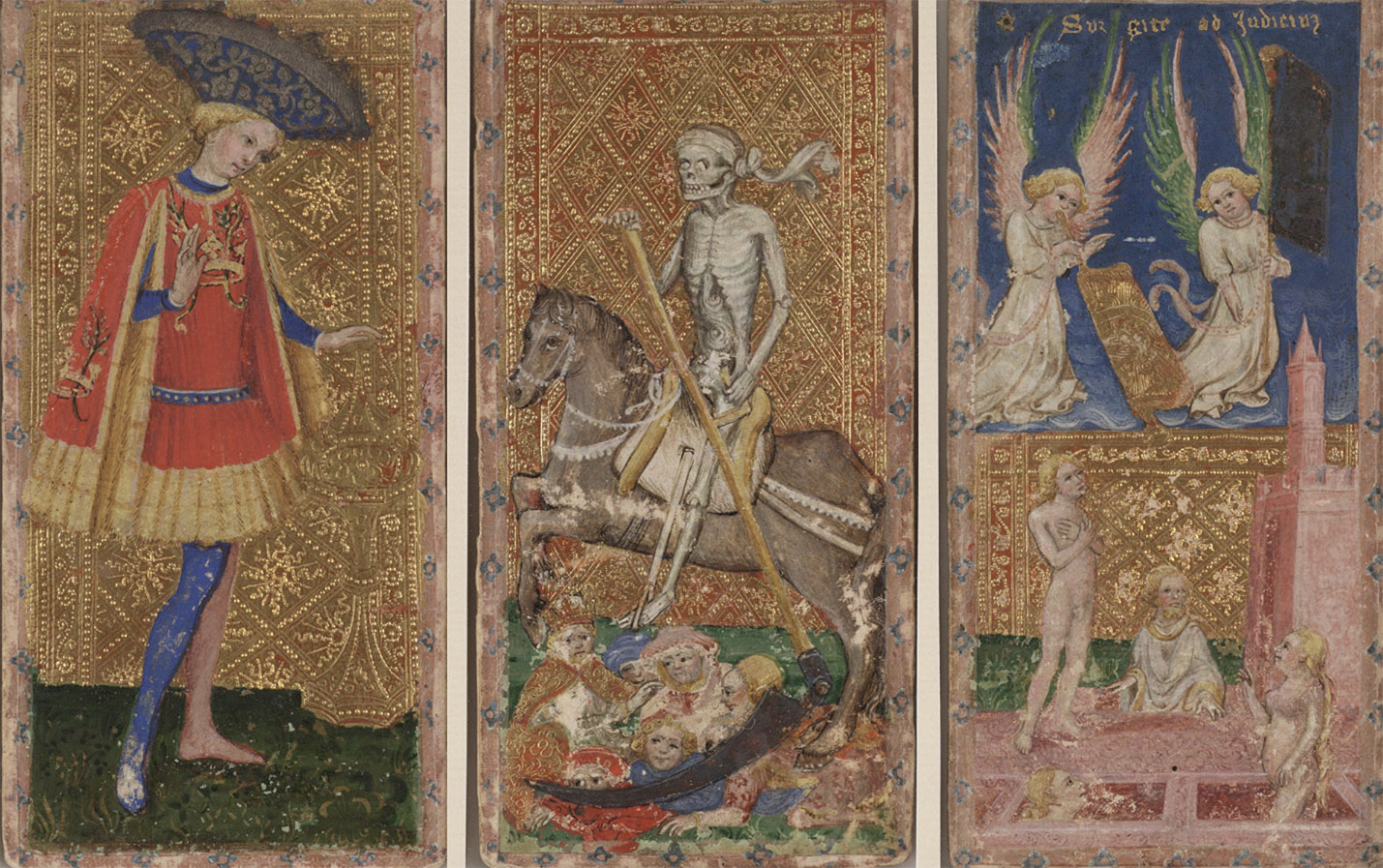Difference between revisions of "Template:Occult.live:Today's featured article"
Occultwiki (talk | contribs) |
Occultwiki (talk | contribs) |
||
| Line 1: | Line 1: | ||
[[File: | [[File:Visconti-Example.jpg|250px|left]] | ||
'''[[ | The '''[[Visconti-Sforza Tarot]]''' is used collectively to refer to incomplete sets of approximately 15 [[Tarot]] decks from the middle of the 15th century, now located in various museums, libraries, and private collections around the world. | ||
No complete deck has survived; rather, some collections boast a few face cards, while some consist of a single card. They are the oldest surviving tarot cards and date back to a period when tarot was still called ''Trionfi'' cards, and used for playing everyday card games. They were commissioned by Filippo Maria Visconti, the Duke of Milan, and by his successor and son-in-law Francesco Sforza. They had a significant impact on the visual composition, card numbering and interpretation of modern Tarot decks. | |||
'''([[ | Updated versions of the deck have been published by [[U.S. Games Systems]]. | ||
'''([[Visconti-Sforza Tarot|Full Article...]])''' | |||
Revision as of 18:35, 10 March 2024
The Visconti-Sforza Tarot is used collectively to refer to incomplete sets of approximately 15 Tarot decks from the middle of the 15th century, now located in various museums, libraries, and private collections around the world.
No complete deck has survived; rather, some collections boast a few face cards, while some consist of a single card. They are the oldest surviving tarot cards and date back to a period when tarot was still called Trionfi cards, and used for playing everyday card games. They were commissioned by Filippo Maria Visconti, the Duke of Milan, and by his successor and son-in-law Francesco Sforza. They had a significant impact on the visual composition, card numbering and interpretation of modern Tarot decks.
Updated versions of the deck have been published by U.S. Games Systems.
